My shopping cart
Your cart is currently empty.
Continue Shopping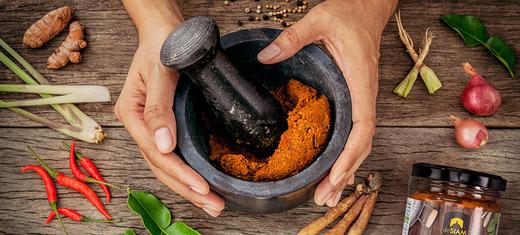
One of the best things about Thai cooking is that despite the immense variety of dishes you don’t actually need to own that much equipment to prepare your dishes the authentic way. In a world where convenient and modern commodities are taking over kitchens, Thais have stuck to traditional methods to get the most delicious and optimal results from the ingredients they use. Here are the five most important cooking utensils used in Thai cooking!

Woks are a quintessential part of Thai cooking. And before you shrug your shoulders and say that a frying pan can do the same job as a wok, let us begin by saying that you couldn’t be more wrong! The reason woks are so immensely popular is because they cook ingredients in a way that a frying pan can’t. Conventional frying pans just don’t distribute the heat the same way.
Woks concentrate the heat in the middle and then distribute that heat evenly over the rest of the cooking surface (on the sides of the wok). The flat surface of a pan is larger so frying pans don’t heat as evenly or as intensely as woks do. The majority of Thai recipes involve cooking ingredients rapidly over a very high heat which simply would not work in a pan!
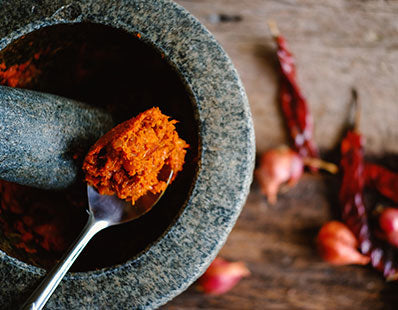
Bashing ingredients together may sound old-fashioned but it’s absolutely necessary in Thai cooking. There’s something about using a pestle and mortar that brings the flavours out of ingredients in a way that a food processor isn’t able to. Thai food wouldn’t taste the same without the pestle and mortar, this amazing cooking tool blends, mashes and fuses flavours and ingredients together. The action of grinding and bashing the food helps extract all the scrumptious flavours and oils in ingredients, it really brings the best out of them and marries them together.
There are two types of pestle and mortar, the two of them together can be used for absolutely anything and be an unstoppable cooking force in your kitchen! The lighter wooden version is generally used for preparing a classic ‘Som-Tum’ (or Papaya Salad), whereas the granite pestle and mortar which has a much harder surface, is used to prep ingredients for stir-fries, and even making fragrant curry pastes. You won’t believe how versatile this cooking utensil is!
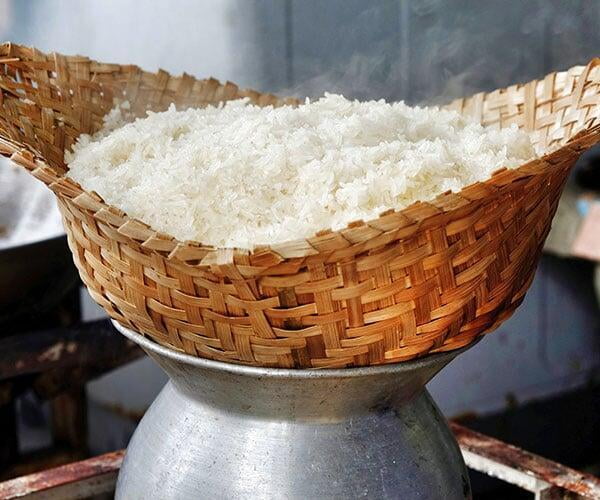
A Thai dish is nothing without rice! You will never see a Thai dish be served without a generous helping of rice. If anything most dishes are centred around rice, different dishes are assorted with different types of rice to highlight the flavours and textures from a particular dish. So you can’t go wrong with purchasing a rice steamer or cooker to make sure you serve up the best rice with your Thai meals!
You can either go down the contemporary route with an electric steamer or rice cooker, or you can choose a more traditional method like woven bamboo baskets. Depending on the sort of equipment you buy you can also steam or cook vegetables, meat and fish!
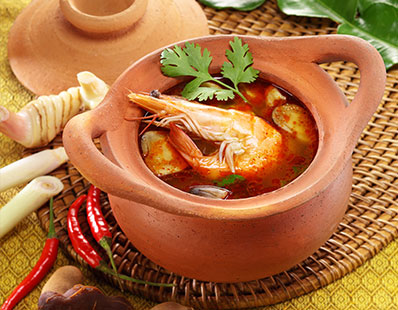
Clay pots (the same as the pestle and mortar) have managed to overcome modernisation. With the rise of pots made from iron, copper, aluminium and other metals, the clay pot was threatened with extinction but there’s something about the way they cook ingredients that make them utterly irreplaceable.
What is most interesting about clay pots is that you soak them in water before using them. In doing so the pot absorbs moisture before cooking which it releases gradually when cooking the ingredients inside it. They’re often used to cook seafood dishes because they’re able to keep fish and shellfish moist and luscious in a way than no other cooking utensil can!
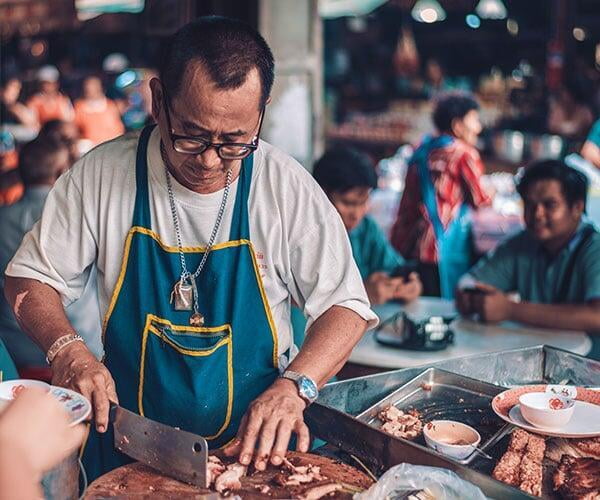
Thai cooking involves a lot of chopping and slicing, so having a good quality knife and chopping board will go a very long way in your food preparation! A sharp paring knife as well as a good serrated knife and a meat cleaver should do the trick. The paring knife will be useful to peel or chop fruits and vegetables, or to remove chilli seeds for example.
The serrated knife will help you slice into slipper ingredients (such as lemongrass) more easily. And the meat cleaver will assist you in slicing meat or fish safely. All three knives should be used on a steady and sturdy chopping board.